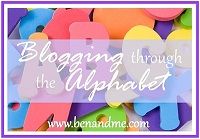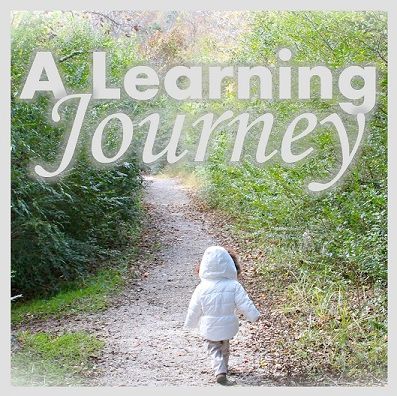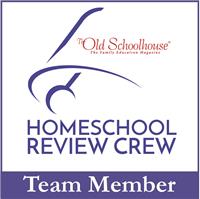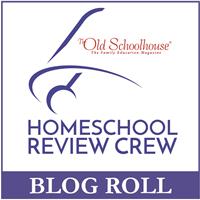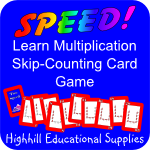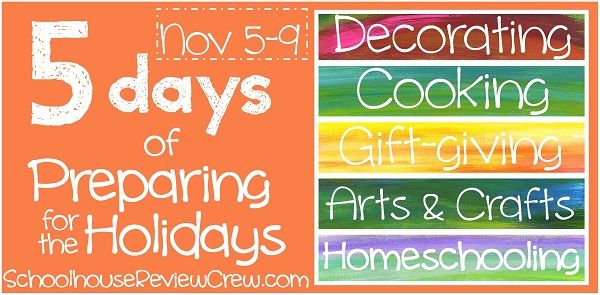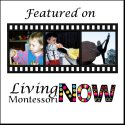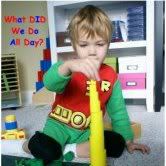Do your children like to sing, dance, or play instruments? Do you have a child bursting with energy? Have you heard about Music Together? If not, then let me be the first to open your eyes to a phenomenal program called
Members of the Schoolhouse Review Crew were asked to review Music Together's Family Favorites CD and Songbook Combo Pack. I was so happy when I found out I would be reviewing this product. I started reminiscing one day ... I was thinking how much I miss the good 'ole days when I would dance around the house like a goofball singing to my daughter (especially when she was an infant and toddler). Alyssa has been dancing and singing songs for as long as I can remember. When I was pregnant, my husband and I were watching the Azul performance at Seaworld. The music was loud! I felt Alyssa kicking (dancing) the entire time. My husband got a kick out of watching my stomach. Over the years, I almost forgot the importance and benefits of music for young children. Alyssa is definitely still a singer and dancer but somewhere along the way, unfortunately, we stopped dancing as much together. Having the opportunity to review this product enabled me to provide, explore, and nurture valuable musical endeavors with my daughter as we did in the past.
Music Together is an internally known early childhood music and movement curriculum founded by director, Kenneth Guilmartin. Co-author of the program, Lili M. Levinowitz, is a professor of Music Education at Rowan University. This developmentally age appropriate, research-based program is designed for children from birth through kindergarten. I believe this a multi-aged, child-friendly program suitable for music loving children in early elementary up through at least 1st grade. Music Together is a pedagogically strong program providing families with a playful music rich environment while cultivating their imagination. Early music exposure introduces children to rhythm and movement. There are many researchers that believe music helps children concentrate and use higher order thinking skills. Music learning and movement also can help develop and benefit all learning and educational skills. I tend to agree with the research.
Music Together is an internally known early childhood music and movement curriculum founded by director, Kenneth Guilmartin. Co-author of the program, Lili M. Levinowitz, is a professor of Music Education at Rowan University. This developmentally age appropriate, research-based program is designed for children from birth through kindergarten. I believe this a multi-aged, child-friendly program suitable for music loving children in early elementary up through at least 1st grade. Music Together is a pedagogically strong program providing families with a playful music rich environment while cultivating their imagination. Early music exposure introduces children to rhythm and movement. There are many researchers that believe music helps children concentrate and use higher order thinking skills. Music learning and movement also can help develop and benefit all learning and educational skills. I tend to agree with the research.
What's Included in the Family Favorites CD and Songbook Combo Pack:
1.) First Family Favorites CD
A compilation of 19 popular family favorite songs from nine other song collections. The award-winning CD addresses and exposes children to a wide variety of music genres and musical elements. The musical compositions are well-produced. The entire collection is outstanding containing many upbeat songs. However, we do have a few favorite featured songs such as "Obwisana, One Little Owl, May All the Children, Palo Palo, Biddy Biddy, Ridin' in the Car, and John the Rabbit." You can listen to music samples from the "Family Favorites CD" or buy digital downloads of the album and songs here. There is a 32-page enclosed activity booklet attached to the CD containing additional ideas on how to incorporate musical activities in a fun and engaging way.
2.) Family Favorites Songbook for Teachers
The set included a companion 112-page spiral bound booklet with ideas and tips for implementing music and movement into your schedule. There are many types of activities including but not limited to fingerplays, focus activities, lap songs, dyads, instrumental and prop play, ostinati, large movements, and small movements. The songbook follows the sequential or numerical order of the CD with iconed track numbers provided at the top of each page. The illustrated songbook contains the company's philosophical beliefs, teaching principles, colored photos, song lyrics, musical notation arrangements, background information, a list of instruments and their use, and activities with teacher adaptations. The songbook adaptations are organized in four sections "All Ages and Settings," "Infants," "Preschoolers and Older Children," and "Children with Special Needs." The adaptations mentioned for children with special needs focuses on children with auditory sensory issues, visual sensory issues, vestibular and proprioceptive sensory issues, social, and/or physical issues. The songbook also includes adaptive games and techniques for caregivers. Additionally, there is a glossary of terms and a guitar reference chart with notes towards the back of the songbook. The songbook for teachers was originally intended for those teaching music in some way or another. Although, I feel this resource would be extremely helpful to anyone wanting to expose their child to music, movement, and instrumental play. Please keep in mind that the songbook is NOT meant to replace the actual classes offered through Musical Together.
1.) First Family Favorites CD
A compilation of 19 popular family favorite songs from nine other song collections. The award-winning CD addresses and exposes children to a wide variety of music genres and musical elements. The musical compositions are well-produced. The entire collection is outstanding containing many upbeat songs. However, we do have a few favorite featured songs such as "Obwisana, One Little Owl, May All the Children, Palo Palo, Biddy Biddy, Ridin' in the Car, and John the Rabbit." You can listen to music samples from the "Family Favorites CD" or buy digital downloads of the album and songs here. There is a 32-page enclosed activity booklet attached to the CD containing additional ideas on how to incorporate musical activities in a fun and engaging way.
2.) Family Favorites Songbook for Teachers
The set included a companion 112-page spiral bound booklet with ideas and tips for implementing music and movement into your schedule. There are many types of activities including but not limited to fingerplays, focus activities, lap songs, dyads, instrumental and prop play, ostinati, large movements, and small movements. The songbook follows the sequential or numerical order of the CD with iconed track numbers provided at the top of each page. The illustrated songbook contains the company's philosophical beliefs, teaching principles, colored photos, song lyrics, musical notation arrangements, background information, a list of instruments and their use, and activities with teacher adaptations. The songbook adaptations are organized in four sections "All Ages and Settings," "Infants," "Preschoolers and Older Children," and "Children with Special Needs." The adaptations mentioned for children with special needs focuses on children with auditory sensory issues, visual sensory issues, vestibular and proprioceptive sensory issues, social, and/or physical issues. The songbook also includes adaptive games and techniques for caregivers. Additionally, there is a glossary of terms and a guitar reference chart with notes towards the back of the songbook. The songbook for teachers was originally intended for those teaching music in some way or another. Although, I feel this resource would be extremely helpful to anyone wanting to expose their child to music, movement, and instrumental play. Please keep in mind that the songbook is NOT meant to replace the actual classes offered through Musical Together.
I agree with the company's philosophy for music development. This excerpt is from the Music Together website "All children are musical. Therefore, all children can achieve basic music competence, which is defined as the ability to sing in tune and move with accurate rhythm." More can be read about their mission and philosophy on their website. Click the link above.
Helpful Rhythm Instruments You Can Make or Purchase
- Scarves
- Egg Shakers
- Rhythm Sticks
- Train Whistle
- Harmonica
- Maracas
- Drums or Bongos
- Triangles
- Resonator Bells
- Props such as balls, parachutes, teddy bear, baby doll, and so forth
A great website for making your own rhythmic instruments is Homemade Musical Instruments.
How We Use It
We played the music as often as we possibly could. The music CD was used several times throughout the day including bedtime, bath time, car travel, school time, free time, etc. I also used this in conjunction with her music curriculum including instrumental lessons. I set aside a minimum of two to three days per week to use the songbook, CD, and activity book. We began the lesson with the "Hello Song" and ended with the "Goodbye Song" as a way to form a routine. I wanted her to know when lessons would begin and end. When we sang the "Hello Song," we always sang it in the same tempo as the song on the CD while completing the phrase "Hello, I'm ___" with our names or silly self names. Other times we would say hello to other school areas. The class ended with a hug, kiss, high five, or a handshake. We usually complete approximately five songs per lesson fewer on our busy days. Our sessions last about 30-50 minutes. Alyssa usually asks to listen to more songs and I give her about 10-15 minutes to dance and sing freely while playing instruments of her choice. We placed all the instrumental items we might use in her music workbox including maracas, triangle, harmonica, rhythm sticks (thick dowels), and so forth. I made sure that other large props or instruments were nearby such as her teddy bear, baby doll, guitar, and drums.
Our Experiences
My daughter truly LOVES the joyful songs in this collection! In addition to telling you a little about our experiences, I want to invite you to live vicariously through our photos. Be sure to click on the photos to enlarge them. I loved watching Alyssa come up with movements or verses. It was a great way to spark her creativity and imagination. We used many of the recommended movements from the songbook. The photos below reveal a few of the ideas presented in the songbook.
Alyssa dressed up as Rapunzel one day for our music lessons. A few of the songs we sang that day were "Drivin' in the Car" and "John the Rabbit." We use small movements to go along with the verses "Drivin' in the Car." We replaced the words with other forms of transportation and sound effects. We hopped during "John the Rabbit" and sang using a call and respond song structure. At first, she responded by singing the "Yes, ma'am" part after I sang. Then, we also sang the song replacing words with other vegetables we eat at home using descriptive words or adjectives including colors such "my crunchy orange carrots, my tasty yellow corn, my leafy green spinach, my green and red bell peppers, my broccoli, and my long asparagus." Of course, you can't forget to sing the song using deep-pressure large movements like hopping while exercising gross and fine motor skills. She sang the song wearing bunny ears and used her hand to make a bunny tail. This song required active participation, a positive attitude, and was very engaging! Oh ... and the other night Alyssa found her jackrabbit puppet and asked to listen to this song. She changed the name of the puppet and sang it as "Jack the Rabbit" instead of "John the Rabbit." She also used several other family names just for fun.
On September 11th, in honor and memory of the traumatic events that occurred that day, Alyssa and I listened to and sang the song "May All Children." She used her baby doll as a prop. On other occasions, I picked her up and we swayed back and forth. It was a touching and endearing moment for me, because she laid her head upon my shoulder while hugging me tightly and said, "Mommy, I love you sooo much. I am thankful that God gave me you and daddy." Seriously, my eyes began to tear up and I almost cried like a baby. This has become a special bonding time for the two of us. As the music played the other day, she said, "This is the song where you pick me up and dance with me mama." I stopped everything I was doing because I knew ... at that moment ... it meant a lot to her. I noticed one day she was trying to write the song lyrics on her white board.
Alyssa enjoyed using her teddy as a prop while waltzing and singing to the tune "Dancing With Teddy." She raised her teddy high in the sky, lowered it to the ground, and held it close to her heart. We changed the prop and words when using Clifford the Big Red Dog. We also tried several different movements to change things up a bit.
On page 86 of the Family Favorites Songbook, the child is asked to tell a story behind the illustration. They are then asked if they can sing about the illustration? They are also encouraged to tell or sing other teddy bear stories. Alyssa narrated a story for the songbook illustration and I acted as the scribe. You can read her story in the following section.
Our Experiences
My daughter truly LOVES the joyful songs in this collection! In addition to telling you a little about our experiences, I want to invite you to live vicariously through our photos. Be sure to click on the photos to enlarge them. I loved watching Alyssa come up with movements or verses. It was a great way to spark her creativity and imagination. We used many of the recommended movements from the songbook. The photos below reveal a few of the ideas presented in the songbook.
Alyssa dressed up as Rapunzel one day for our music lessons. A few of the songs we sang that day were "Drivin' in the Car" and "John the Rabbit." We use small movements to go along with the verses "Drivin' in the Car." We replaced the words with other forms of transportation and sound effects. We hopped during "John the Rabbit" and sang using a call and respond song structure. At first, she responded by singing the "Yes, ma'am" part after I sang. Then, we also sang the song replacing words with other vegetables we eat at home using descriptive words or adjectives including colors such "my crunchy orange carrots, my tasty yellow corn, my leafy green spinach, my green and red bell peppers, my broccoli, and my long asparagus." Of course, you can't forget to sing the song using deep-pressure large movements like hopping while exercising gross and fine motor skills. She sang the song wearing bunny ears and used her hand to make a bunny tail. This song required active participation, a positive attitude, and was very engaging! Oh ... and the other night Alyssa found her jackrabbit puppet and asked to listen to this song. She changed the name of the puppet and sang it as "Jack the Rabbit" instead of "John the Rabbit." She also used several other family names just for fun.
 |
| Rapunzel "Drivin' in the Car!" |
| "Sleep, sleep, sleepin' in the car." |
 |
| "John the Rabbit" |
 |
| Alyssa and her baby doll dancing to "May All the Children" |
Alyssa enjoyed using her teddy as a prop while waltzing and singing to the tune "Dancing With Teddy." She raised her teddy high in the sky, lowered it to the ground, and held it close to her heart. We changed the prop and words when using Clifford the Big Red Dog. We also tried several different movements to change things up a bit.
| Turning and Dancing with Teddy |
"Once upon a time, there was a baby teddy bear, mama bear, bunny, and little girl who loved her mama bear so much. So ... she picked her up and danced with her and sang "Dancing With Teddy" high and low while the other two were sipping their tea."
One of our absolute favorite songs was "One Little Owl." She enjoyed performing this song! It was during this song that I first noticed her coming out of her shell and reacting more theatrical. I loved how expressive she was with her facial features and her use of the dramatic movements mentioned in the songbook. Since this review happened during our bird unit study we brainstormed a list of several types of birds. As suggested in the book, we sang about each type of bird in the old oak tree. On another occasion we replaced words with different animals or objects visiting the oak tree.
She was experimenting with different ways to use the sticks and move to the beat as you will see in the picture below as she taps on the stool. These are not real rhythm sticks. We used two large dowels and explored different sounds and beat levels using thinner and thicker sticks. We danced using a variety of large movements. I modeled several examples for her to get us started. During our bird unit, Alyssa lead us with the verse "Hey, hey whadd'ya say, let's all soar like birds today." She also added the verse "Let's all peck like chickens today." The funniest verse was when she said, "Let's all lay our eggs today." I won't post those photos.
I leave you with this last photo. As many of you know, we recently sold our house and moved out. This was the only house Alyssa ever knew so it was an emotional day for us all. Alyssa and I decided to play the "Goodbye, So Long, Farewell Song" on the last day. This was more her idea than mine. In the photo below, you will see her saying "Goodbye" to the door. She gave the door a big hug and kiss. We were crying that day. We went through different parts of the house singing new verses.
What I Liked
First things first, obviously the music is phenomenal! The songs and tunes on this CD are extremely catchy! The entire family at one point or another was caught singing the musical selections at random parts of the day. We LOVED all of the music! I even caught my husband, Jeff, bopping his head while we listened to the music in the car one night. He is starting to sing the songs too. Alyssa thought I was extremely silly at times. She was giggling for the duration of a song. Do you have SQ? You know ... "Silly Quotient." If not, this program requires a certain level of silliness and parent involvement - as it should.
| "One Little Owl" says, Whoo Whoo. |
| She said this was her mean crow look - "Caw ... Caw" |
| "Oh, no!" |
 |
| Oak tree fell down singing "All these things are sit-ting on me!" |
| "Caw Caw!" This was on another day. She used paper towels as wings. |
 |
| "Stick Tune" |
 |
| Free dance - Gettin' Down! |
What I Liked
First things first, obviously the music is phenomenal! The songs and tunes on this CD are extremely catchy! The entire family at one point or another was caught singing the musical selections at random parts of the day. We LOVED all of the music! I even caught my husband, Jeff, bopping his head while we listened to the music in the car one night. He is starting to sing the songs too. Alyssa thought I was extremely silly at times. She was giggling for the duration of a song. Do you have SQ? You know ... "Silly Quotient." If not, this program requires a certain level of silliness and parent involvement - as it should.
- One great thing about this set was that I didn't have to leave the house to enjoy music as a integral part of our homeschool day. I haven't ever been to an actual music class with my daughter, because I have a fear of singing in front of others. I almost always break out into a sweat due to embarrassment.
- I favor any curriculum that provides adaptations. The well-organized songbook included adaptations for each song which were divided into four groups by age range and special needs. This was particularly useful to me. I mainly used the activities grouped under the titles "Preschoolers and Older Children" or "All Ages and Settings." I also read through the adaptations designed for "Children with Special Needs" and used whatever activities seemed developmentally appropriate for Alyssa based on her interests. I hardly ever used the "Infant" adaptations.
- The songbook contains entertaining, hands-on activities that help parents interact with their children. It is of great importance for parents to interact positively with their children on a daily basis in a safe, comforting environment. So many children in today's world lack the parental involvement and interaction that I feel is necessary in life. One thing I love about this set is that it encourages parents to interact with and play musically with their children without fears of ridicule. It facilitates the incorporation of movement, motions, and instrumental play into parent-child activities.
- Another thing I love about the songbook is that background information for each and every song is given as an introduction. An example of the background information for the previously mentioned song "May All the Children" can be found here. I enjoyed reading the information provided and it helped me gain a better understanding as to where or how the song originated.
- The songbook supports six pre-literacy skills to help parents and educators raise successful readers. There are education moment videos that discuss ways the songbook activities are used to facilitate literacy development.
Possible Cons
How do you incorporate music into your homeschool day? Why not try Music Together? Let your child dance the wiggles out and sing the rockin' tunes? Check out Music Together and see the joy on your child's face as he or she sings and dances the day away. Are you interested in purchasing this set?
If you purchase the award-winning CD and Songbook Combo Pack (K0227) from the Music Together's online store, instead of purchasing the items separately, you save $5.00 making it the affordable price of only $39.95. I believe it is worth every penny! You can save an additional $2.00 when purchasing the combo pack by entering the Promo Code, Schoolhouse, at checkout. Each product can also be purchased separately. The CD is $14.95 and the songbook is $29.95. The MP3 downloadable album ($9.99) or individual songs (0.99 each) are available for purchase too. Music Together also sells other products including rhythm instruments such as castanets, drums, egg shakers, tambourines, and more.
- I am not familiar with the musical terminology and notations used throughout the book, because I am not musically inclined. However, thankfully there was a glossary of terms in the back of the book to assist me in the learning process. Macrobeat? Microbeat? Did I not pay attention during childhood music classes? Musical notations and terminology confuse and overwhelm me at times. You definitely do not have to have knowledge of these musical terms to enjoy the benefits of the Songbook and CD. I couldn't really think of any other features that I didn't like or wanted to improve.
Recommendations and Results
I recommend the Songbook and CD Combo Pack to all homeschooling families and early elementary classroom teachers in schools implementing any type of educational method or approach. I would also recommend this set to daycare providers, preschool directors and teachers, outreach directors, musical instructors, individuals in therapeutic professions, co-ops organizers, church groups, and librarians. Our local librarian starts her lesson with music and singing, this would be a wonderful resource to use since the children are six years old or younger.
I know that we will continue using the Music Together combo pack for years in our home. We have experienced the joy of music-making together while gaining a profound appreciation for the diversity and rhythm of the featured songs. Alyssa is already memorizing and singing songs to her dolls and family members. She loves to perform the "One Little Owl"song. This set has given Alyssa and I a special mother-daughter bonding time and brought a love of musical play back into our lives. It helped me rediscover the benefits of music and enabled me to add musically fun experiences in our day. The songs are unforgettable and very difficult to get out of you your head once you hear them. You'll see what I mean when you find yourself singing, "Obwisana," "Palo, Palo," or "John the Rabbit" when no one else is looking.
I know that we will continue using the Music Together combo pack for years in our home. We have experienced the joy of music-making together while gaining a profound appreciation for the diversity and rhythm of the featured songs. Alyssa is already memorizing and singing songs to her dolls and family members. She loves to perform the "One Little Owl"song. This set has given Alyssa and I a special mother-daughter bonding time and brought a love of musical play back into our lives. It helped me rediscover the benefits of music and enabled me to add musically fun experiences in our day. The songs are unforgettable and very difficult to get out of you your head once you hear them. You'll see what I mean when you find yourself singing, "Obwisana," "Palo, Palo," or "John the Rabbit" when no one else is looking.
If you purchase the award-winning CD and Songbook Combo Pack (K0227) from the Music Together's online store, instead of purchasing the items separately, you save $5.00 making it the affordable price of only $39.95. I believe it is worth every penny! You can save an additional $2.00 when purchasing the combo pack by entering the Promo Code, Schoolhouse, at checkout. Each product can also be purchased separately. The CD is $14.95 and the songbook is $29.95. The MP3 downloadable album ($9.99) or individual songs (0.99 each) are available for purchase too. Music Together also sells other products including rhythm instruments such as castanets, drums, egg shakers, tambourines, and more.
If you have any questions about Music Together, please contact the company here. They can also be reached at 800-728-2692. Be sure to read through the articles and post on the company website to familiarize yourself with the program and their philosophy. You can follow Music Together on Facebook ... I already liked their page. If you would like to subscribe to their e-newsletter to find out more about the classes or preschool program click here. You can also use the Class Locator to find and participate in a nearby Music Together Class. Surprisingly, I found a couple classes in my area that I may need to check out.
Thank you Music Together and Schoolhouse Crew Leaders for bringing musical fun back in our lives!
Please visit the Schoolhouse Review Crew Blog here to read other reviews for Music Together's Combo Pack. Go ahead boogie on over to our blog to check out my crewmate's reviews!





